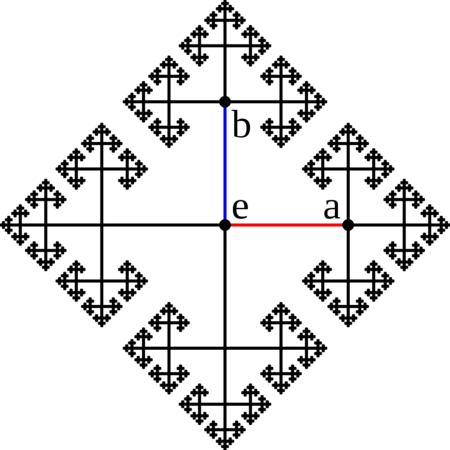Geometric Group Theory
Geometric group theory studies groups by treating them as geometric objects endowed with a metric. This can be done for groups that are finitely generated, i.e. that can be reconstructed from a finite subset, via multiplication and inversion. Typical examples include fundamental groups of manifolds or groups of matrices with integer coefficients.
Given a finite generating set \(S\) of a group \(G\), one can define a metric on \(G\) by constructing a connected graph, the Cayley graph of \(G\), with \(G\) serving as set of vertices, and oriented edges joining elements in \(G\) that differ by a right multiplication with a generator from \(S\). A Cayley graph depends not only on the group but also on the chosen (finite) generating set. Quasi-isometry is the appropriate equivalence relation on metric spaces, that has the property that Cayley graphs associated with different generating sets are.
Among the fundamental questions in geometric group theory we find the following:
1. If \(G\) and \(H\) are quasi-isometric groups, to what extent do \(G\) and \(H\) share the same algebraic properties?
2. If a group \(G\) is quasi-isometric to a metric space \(X\), what geometric properties on \(X\) translate to interesting algebraic properties of \(G\)?

Geometric group theory emerged as a distinct area of mathematics between the 1980s and the 1990s, thanks to the monograph of Mikhail Gromov "Hyperbolic groups" that introduced the notion of hyperbolic groups. The area of Geometric group theory is closely related with low-dimensional topology, hyperbolic geometry, the study of Lie groups and their discrete subgroups, mathematical logic, and other areas of mathematics, and provides an important set of tools to study topological surfaces and their automorphism groups.

